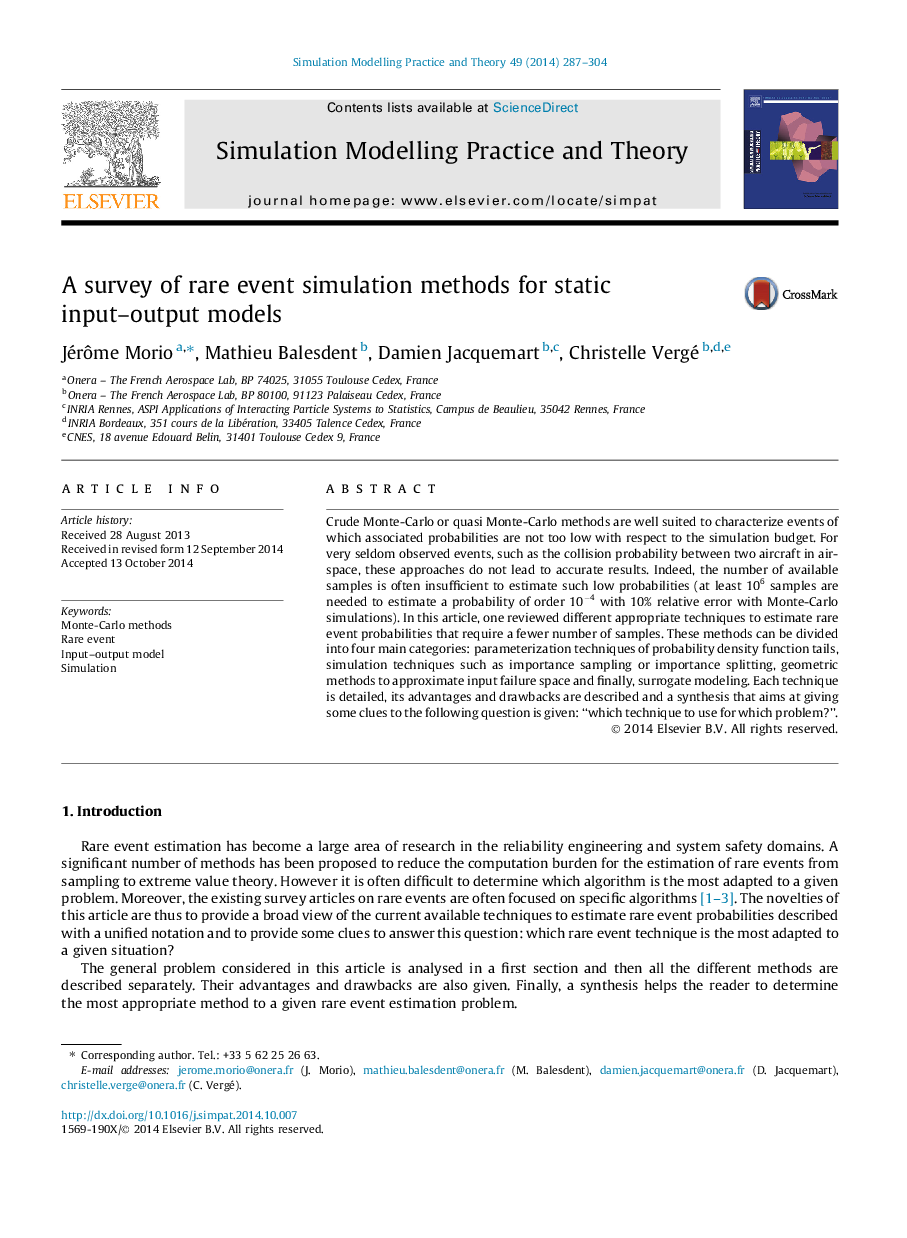| Article ID | Journal | Published Year | Pages | File Type |
|---|---|---|---|---|
| 6902877 | Simulation Modelling Practice and Theory | 2014 | 18 Pages |
Abstract
Crude Monte-Carlo or quasi Monte-Carlo methods are well suited to characterize events of which associated probabilities are not too low with respect to the simulation budget. For very seldom observed events, such as the collision probability between two aircraft in airspace, these approaches do not lead to accurate results. Indeed, the number of available samples is often insufficient to estimate such low probabilities (at least 106 samples are needed to estimate a probability of order 10-4 with 10% relative error with Monte-Carlo simulations). In this article, one reviewed different appropriate techniques to estimate rare event probabilities that require a fewer number of samples. These methods can be divided into four main categories: parameterization techniques of probability density function tails, simulation techniques such as importance sampling or importance splitting, geometric methods to approximate input failure space and finally, surrogate modeling. Each technique is detailed, its advantages and drawbacks are described and a synthesis that aims at giving some clues to the following question is given: “which technique to use for which problem?”.
Related Topics
Physical Sciences and Engineering
Computer Science
Computer Science (General)
Authors
Jérôme Morio, Mathieu Balesdent, Damien Jacquemart, Christelle Vergé,
